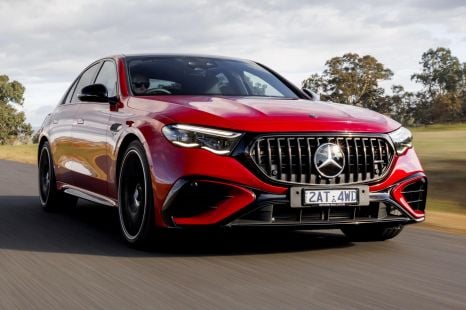

Max Davies
5 Days Ago
Cupra is a young brand worldwide, and it's set to hit Australia in the middle of 2022. We sat down with the new boss to see how it's going to happen.

Contributor
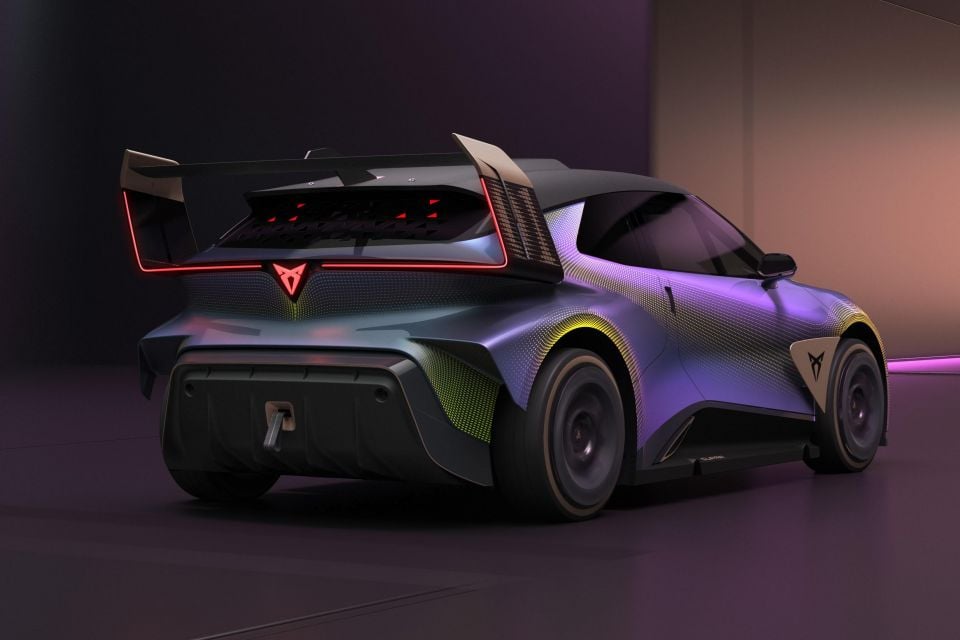

Contributor
The Volkswagen Group family is expanding in Australia during 2022.
Well-known Volkswagen, sensible Skoda, and luxurious Audi will be joined by Spanish upstart Cupra.
At one point, Cupra was a performance sub-brand for Seat. Now, though, it’s a standalone aimed at bringing performance to the people.
When it launches, it’ll have three models and a broad range of engines on offer, including plug-in hybrids. Pure-electric cars will follow.
Cupra is also promising to sell its cars direct-to-consumer rather than through a dealer network.
The man at the helm is Ben Wilks, a two-decade veteran of the Volkswagen Group. Having worked with Volkswagen Commercial, Audi, and Volkswagen Passenger vehicles, he’s now brand director for Cupra Australia.
Mr Wilks was in hotel quarantine when we spoke, having travelled to Spain and Germany to put the finishing touches on the plan to bring Cupra to Australia.
We sat down with him to talk about what Cupra stands for, why it’s launching with plug-in hybrids, and how he plans to make the brand stand out in Australia’s crowded market.

Ben Wilks: Good question. It’s kind of the most exciting thing, because Cupra is a brand that really does define itself – not only within the Group, but within the industry more widely.
I think it’s as simple as saying we are the only dedicated performance brand at an accessible price point. We are a brand that is purely targeted at drivers, at those who love driving and who love design.
We’re doing that at an accessible price points. For me that’s the most exciting thing about bringing this brand to life.
There’s different things about how we’re bringing it to the market, but at its core this is something for people who find driving is not a task, not a chore, and who enjoy the cars that they see on their roads.
This is where Cupra does something quite special.

BW: The story for Cupra in Australia is literally the story of Cupra, so we’re launching as a standalone brand here.
Cupra is a part of the Volkswagen Group, and has come originally from being the performance arm and the racing arm of SEAT, and then has evolved into its own offer altogether.
The timing is right for something like that to exist as we move into a future of electrification.
It’s important to underscore that we don’t have to lose any of the appeal from a driving point of view or a design point of view as we move into [electric cars], and that’s where the Cupra really starts to make a lot of sense for the future as well – by signalling the intent of the crew from Barcelona, and what we want to do in the future.
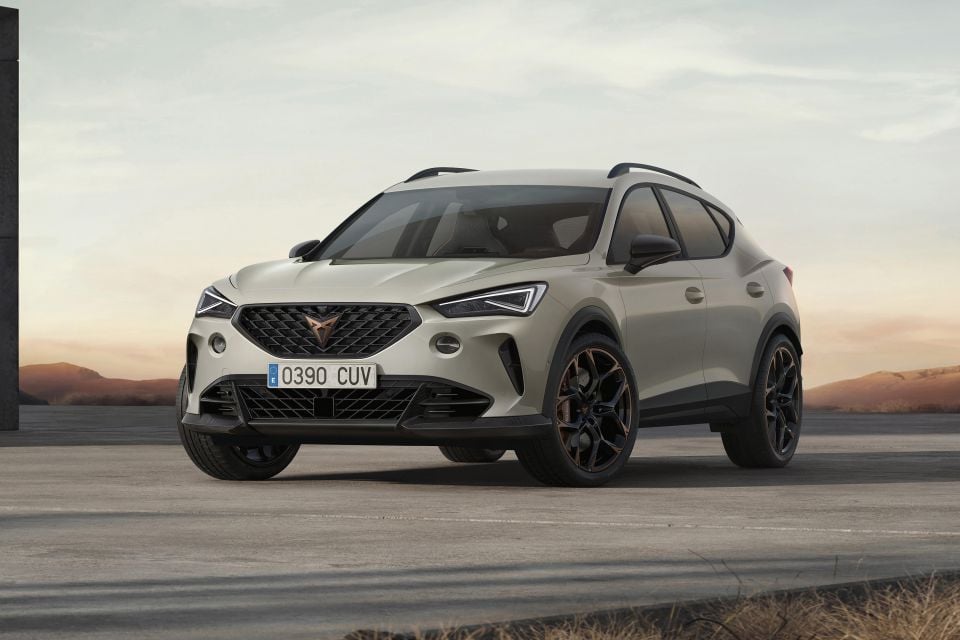
BW: With the type of market we have here and its orientation towards performance cars, and towards design, Australia stands out as being the right place that you’d start this.
We have a very strong mix, if I look in the brands of the Volkswagen Group, towards performance cars – particularly in the price segment we’re going to operate in. It makes perfect sense for the Cupra brand to look to Australia.
You described it as a hard market, but I’d say what we have is a fairly open-minded market in terms of new brands.
That’s one of the reasons there are so many brands operating in a relatively limited market size-wise, the Australian consumer is willing to say ‘there’s something different, I’ll consider it, and I’ll consider it on its merits’.
There I think we’ve got something interesting to put in front of them, in product segments that are interesting to Australian consumers as well – in SUV segments, with this new crossover segment, and with plug-in hybrids etcetera.
We’ve got an offer that is compelling, and an offer that looking externally from the market point of view is something Australians are looking to buy.
Australia is a relatively sophisticated market, and if you can prove that a brand has strength in this market then it’s relatively straightforward to say that will follow in other export markets in future.
BW: Brands definitely come, and some go, and that’s something that needs to be looked at quite openly – not least because customers want to buy into something they think has a degree of permanence about it.
What Cupra is bringing is a dedicated performance and design brand at a price point that is reasonable, and is accessible by a large percentage of the market.
That’s number one, number two is; what Cupra offers is this marriage of logic and emotion. [By that] I mean strong platforms that are the absolute envy of the industry in terms of the underpinnings, but also this sense of… I described it the other days almost an unnecessary beauty.
Cars don’t have to look that good to work, but that just makes them a pleasure to behold. We offer an indulgence that isn’t necessarily pretentious, it’s just a pleasure.
The third thing is; as we know in life, trying to be all things to all people inevitably fails – and we’re not trying that. It’s a very distinctive comment of Wayne Griffiths [global Cupra boss] that we aim to be ‘loved by some, not liked by everybody’.
That allows a great deal of licence for us to really hone in on a very distinct target, and to be very precise about who we want to appeal to with these cars. We’re not trying to to have an economy hatchback, and equally we’re not trying to have a 12-seater bus.
We’re focused on a very particular part of the market.
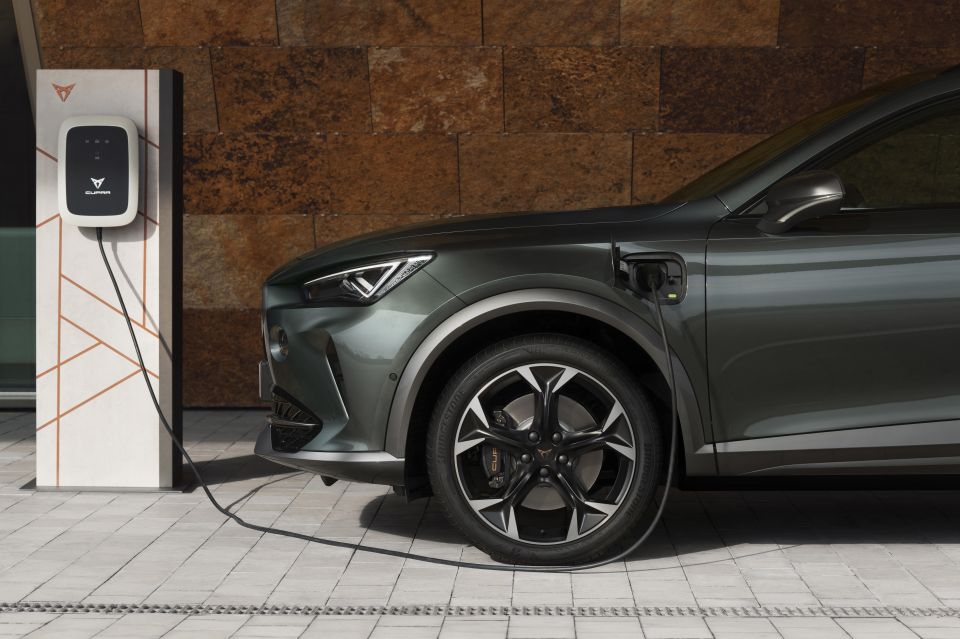
BW: To address the range we want to bring first, I think it’s a pretty good indication of the seriousness with which we take the business case for Australia – the fact we are bringing three separate models, and we are bringing in total nine different drivelines at launch.
That’s an enormous investment from a [research and development] perspective to bring into the country.
It was important to do that because we’re not arriving here to come to a few hundred vehicles, we’re arriving here really to address a segment of the market that is busy, and is interesting.
Having the Ateca, having the Formentor are both obvious choices because we are a huge SUV market. We’re more than two-thirds SUV in Australia, which means these are the cars our customers want to buy…
There’s no magic tricks here. We’ve got to have cars that people are interested in.
With the Ateca we have a really strong traditional, practical SUV with a performance base. With the Formentor we have a really exciting, dynamic, and quite beautiful-looking crossover sitting in this sports hatch/SUV cross [market].
In the Leon you have a performance hatch that still has a strong space here in Australia, particularly at the performance end of that market there’s a really big opportunity.
It made sense for us to launch with those three models, and then on top it made sense for us to launch performance-oriented engines in each of those cars – starting from a 140kW up through 180kW and into the 221kW, and the 228kW engine in the Formentor.
Ultimately we’re a performance brand, we’re a brand for drivers, but we’re electrifying at a great pace. This is what you will have heard globally from the Cupra brand, that by 2030 we’ll be all about electrification entirely.
The first step, and the first signal towards that from us launching in Australia was for us to have plug-in hybrids at launch.
There I think we’ve got a really strong offer. A plug-in hybrid allows a typical driver to get to-and-from work all week on electric charge, and then take a drive to wherever they like with the performance they’re accustomed to on the weekend.
I think this is a really interesting stepping stone. I think we’re doing something with those plug-in hybrids that not every manufacturer has done before, in offering something that’s appealing from a design sense, and appealing from a performance and a drivability sense as well.
That hasn’t been the case with all of the plug-in hybrids that are on offer. It’s critical for us to have those vehicles to position for our customers where the brand is today, and where it’s going.
This is critical. With a new brand, we’re not just looking back constantly towards history to say ‘that’s what we’re about’. We’re saying ‘here’s what we’ve got, and here’s what we’re headed to’ so you can jump on the journey with us.
That’s certainly the invitation to our customers.
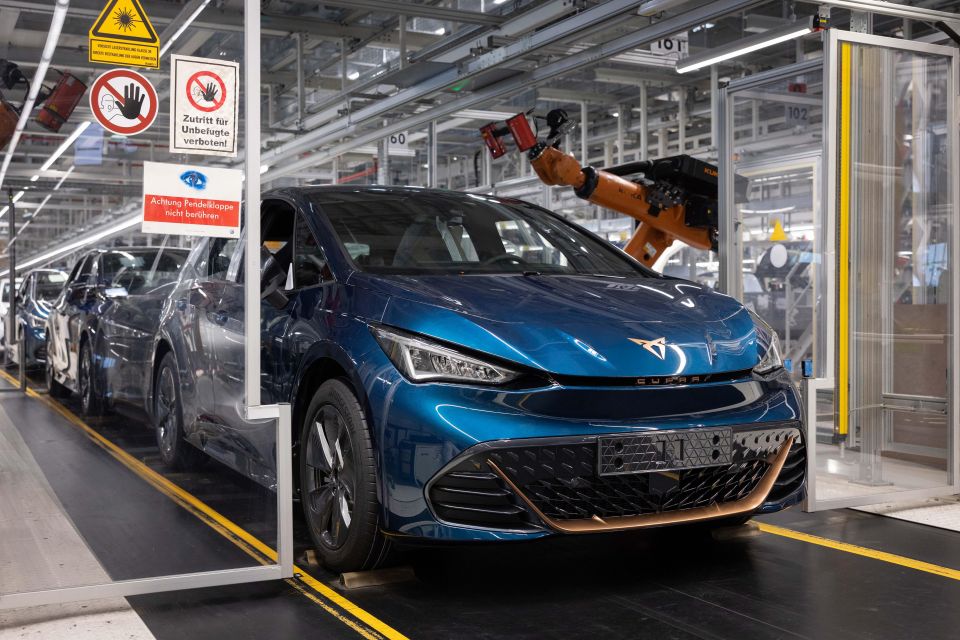
BW: I’m not necessarily sure about the comparison to Volkswagen or Skoda, but I would say that our customer is going to be a relatively discerning and automotive-aware customer.
I think they will understand the offer that’s available in terms of plug-in hybrids, and they’ll see some of those advantages relatively easily. That certainly is a reason to be able to bring them to market.
Moreover with the range, one of the exciting things is that we are enthusiasts, and we are speaking to people who are enthusiasts. That’s a real pleasure.
For me that’s a bit of personal triumph, to be involved in something like that because it allows me to bring together the love of why I’ve been in this industry for so long and the products customers want to buy.
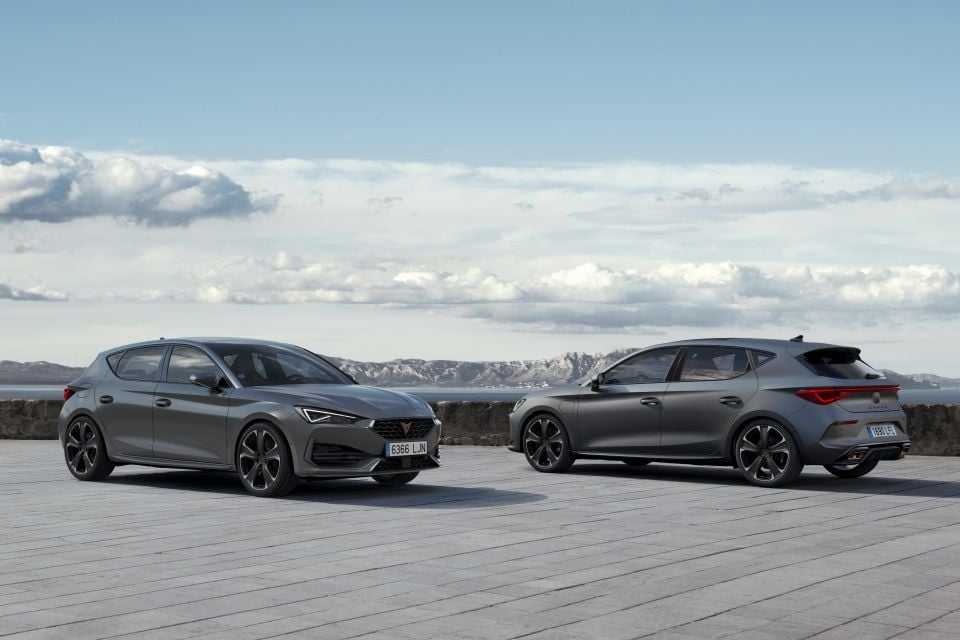
BW: The Cupra brand really is an exceptional opportunity.
Here I would say it’s not just about being a car enthusiast, it’s the culmination of a lot of different things – presenting a different way of working to some extent, and trying to find a way that is even more customer centric in terms of how we bring the brand to market.
It’s wonderful to have a brand that has so much energy about it, and is so much about the future. That’s actually what really attracted me to this brand.
Most automotive brands are somehow anchored in the past. They talk about their history to try and get a message across, whereas Cupra doesn’t do it.
It can’t do that, it doesn’t need to do that. We’re talking about where we’re headed, and how we think to world could be just a bit more interesting.
We talk about this phrase with the Cupra brand: Inspiring the world from Barcelona.
From a personal perspective, feeling the energy of the team over there in Barcelona, and what they’re trying to create… if I can jump another step, feeling the language of Barcelona – the architecture, the attitude to life – that stuff is absolutely imbued in the soul of the cars this team is producing.
For me that’s really exciting. I have always loved cars that have a sense of clinical efficiency, but a sense of just emotion in how they feel, how they sound. It’s not just about absolute racetrack performance.
I feel like every drive you have can be rewarding. I’ve thought that since I was 17 and I waited outside the RTA to get my licence.
Every drive I’ve ever taken, I’ve somehow loved – and I think if you have a car that you can do that in, you’re taking what is a task and turning it into a little bit of pleasure in your everyday life.
For me that’s kind of what cars have always been about.
Also, to have cars that are performance-oriented, cars that give such a visceral response in how they operate… it doesn’t have to be about flat-out track stuff. It’s about the emotional level that you can have.
BW: Ahhh… I have an interesting COVID purchase, but I’m not going to talk too much about it. What I will say is, I got in just in time.
I bought it in March 2020 as COVID started, and it needed a little bit of work – I’m not actually that handy, so I got some people to help me – but I don’t know if I could afford to go again.
It’s quite an extreme situation in terms of what cars are worth just at the moment.
Certainly, I think there’s space in the world to appreciate cars that have been and gone.
On that note, Cupra is about this marriage of logic and emotion. The old car that might sit in my garage is not something that will ever be remotely useful to drive to and from places I actually need to get to.
What I love about driving a Cupra – and this is something I’ve done in New Zealand as well as in Spain – is just having a bit of drama, a bit of intrigue, something a bit exciting and that puts some zest for life back into your drive, but is underpinned by this incredible platform that does everything perfectly, and feels so strong and robust.
I think that’s quite cool.
BW: It doesn’t have to be boring, I think is the message.

BW: Let’s talk about the Garages first.
More broadly, the concept is that we want to have a digital-first interaction with our customers. Of course, everybody is doing their research via websites and online, there’s nothing new in that.
What we want to deliver is a way of customers being able to still come and meet us, and touch and feel the product. That’s obviously the key to what we’re doing, but at the same time to be able to transact as seamlessly as possible in a digital environment. That’s quite critical to what we’re building here.
The experience should be relatively the same whether I’m in my lounge room, or whether I’m sitting in a Cupra Garage with a Cupra Master side-by-side and going through that transaction.
There’s a lot to be done there, to deliver on that. We’ll be aiming to be customer-centric the entire way.
We may not be able to do everything from day one, but we’re aiming to iterate all of those developments so we’ve got a really strong offer.
In terms of the Cupra Garages, we want to meet the customers. There’s no point having big, empty palaces that don’t actually serve to be where our customers are, and don’t actually meet the objective of ‘our customer wants to touch and feel, and get a sense of what our car is all about’.
We’re going to have a mix of locations throughout the capital cities of Australia, with accessibility in mind.
I think there’s a space for us to be in high-profile CBD environments, but equally we need to be in environments where people can quite comfortably test drive cars for example.
Typically when you buy a car, you drive a car to the place you see that car [you’re considering buying], and we need to make sure we’ve got parking.
That said, there’s a chance for us to be in some more unusual places, and try to get in front of new customers. As a new brand, a brand that seeks to establish itself, we want to make sure our world is on display for more people in more unusual places so they can get a sense of us first.
That’s how we see the Garage concept coming to life.
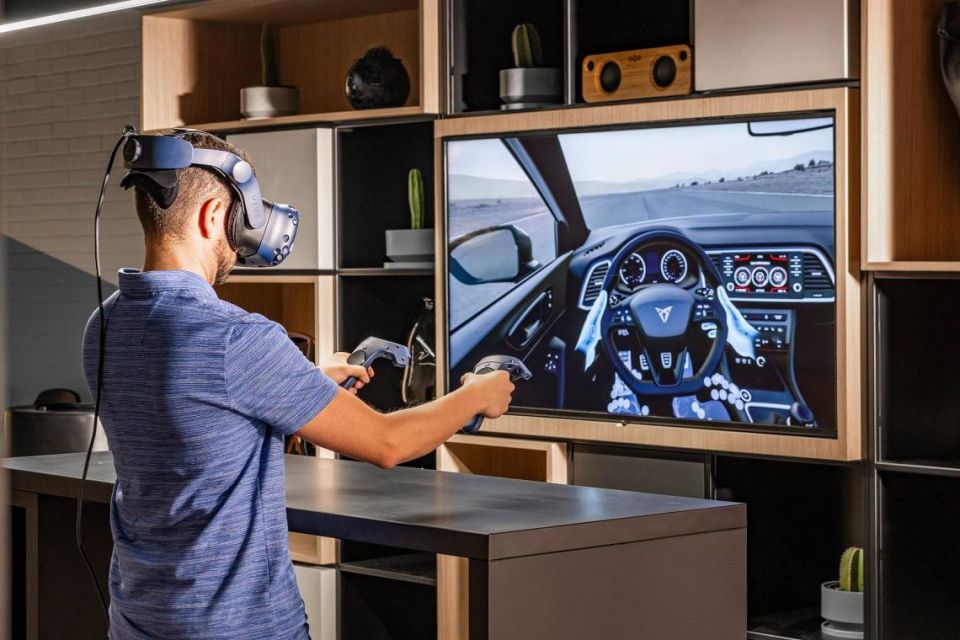
In terms of the Cupra Master, here what we’re really keen to do is to have an advocate for the customer all the way through the process.
Someone who’s there to talk to the customer when they’re first encountering the brand, to activate the test drive process as our agent, to take the customer through the overall transaction.
Also, to be there when we’re booking in for the first service experience, and to make sure that whole association with the Cupra brand is done in a way that is positive – and in a way that our well-informed, articulate, highly-discerning customer group can feel really comfortable about the people they’re dealing with.
I think that’s really important. Those team members, those Cupra Masters, will be working for our agents.
I’m really excited because we are working in a slightly different way. We’re partnering with, really, the best of the best in terms of the automotive retail groups that exist in Australia.
We haven’t finalised those, so I think you’ll see when I speak about that in more detail in the coming months that we really are working with the top shelf of what’s available.
They are [retail] groups that are represented within Volkswagen Group Australia retailers.
BW: We’ll have dedicated team members for the Cupra brand, and dedicated spaces for the Cupra brand, but we’d be working with various groups that we’re working with from a Volkswagen Group Australia perspective to [create] those dedicated offers.
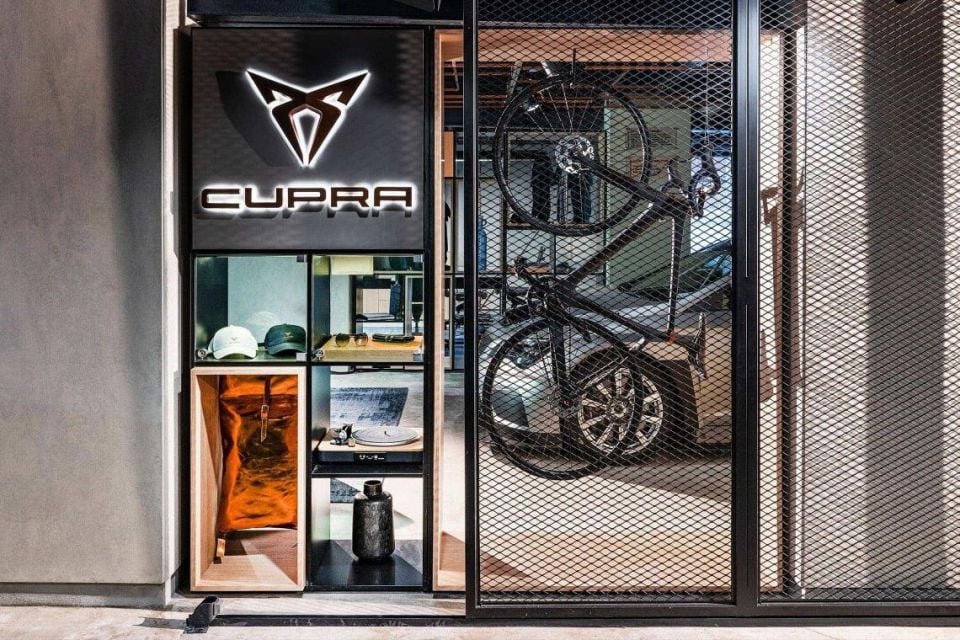
BW: I think what the last 12 to 18 months has taught us so well is, so many things can be done in an online capacity, and need to be done seamlessly, and need to be done in a way that doesn’t cause unnecessary irritation.
I would say that there’s still stuff that we haven’t successfully replaced. That is the need to interact with people, and touch and feel stuff.
I have to say, I was reminded of that fact when I spent two weeks with the team in Barcelona from the Cupra factory.
Despite 18 months of projects back-and-forth, and working together on screens… the chunk of progress we made in that two weeks was phenomenal, because as humans we still work very well with that type of interaction.
There’s many things that we can actually make happen probably better online, just paperwork processes that we can work to streamline and make better. But there’s obviously a massive space that still exists for interaction and some guidance.
I want our customers to feel that when they speak to our Cupra Masters, I want them to get the sense they’re speaking to someone that shares their enthusiasm and their knowledge of the automotive industry, of cars, of the thrill of driving.
I want that to come through from each of our Cupra Masters. That’s highly important, because you should feel this brand at every single touchpoint.
That’s an opportunity for us to get really right, and something to really differentiate ourselves with.
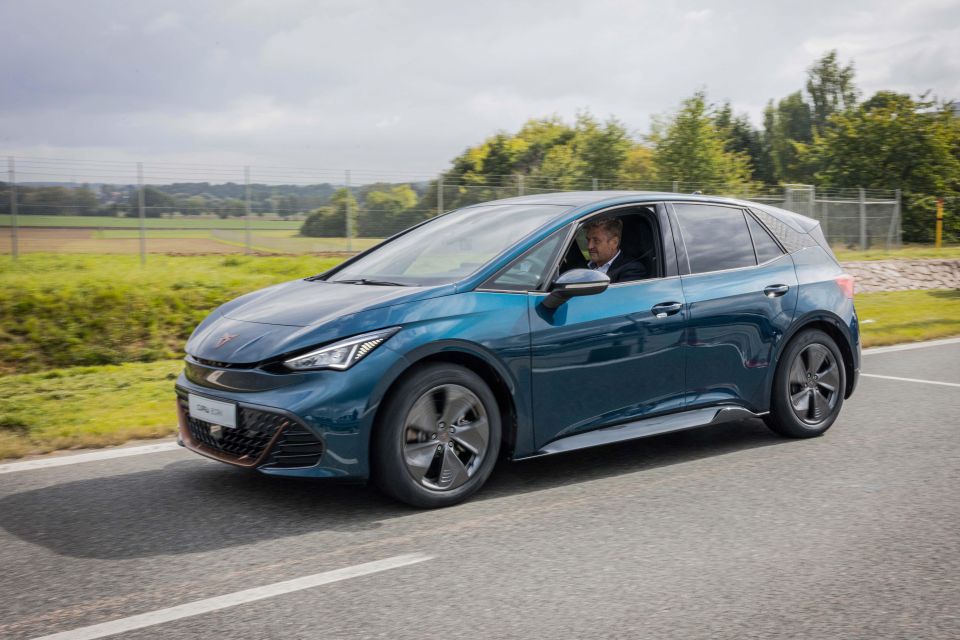
BW: That was the challenge, and Wayne Griffiths did mention it.
It’s around some of the vehicle’s connectivity features. [It’s about] whether we take the vehicle without switching on some of those features for over-the-air updates, for example. That might make more sense.
That’s something that we’re evaluating. I think what the Australian customer will want is an electric vehicle with really good range, really strong performance, and that is fantastic to drive.
I think those things will rate ahead of potentially over-the-air updates. We’ve got to make that decision, combined with what the team are working on.
We’re evaluating that and running some tests through this year to make sure everything works in the way we expect, but I’m pretty confident we can come with an offer that has a lot of appeal for the public.
We’d like to land that car as soon as we possibly can, because there is so much appeal. It’s such an emotional-looking design, it’s a great drive. Having the Boost mode for the additional power is exciting and very Cupra.
Wayne spoke a lot about it, there’s a lot actually done in the drivability of this car, in the handling and the responsiveness [compared to the Volkswagen ID.3].
Despite a shared platform, there’s actually a lot of possibilities and a lot of work that’s gone in from the engineers on the Cupra side to really make that car uniquely responsive.
I think when you get the chance to drive it, ideally in Australia as well, you’ll feel a lot of that.
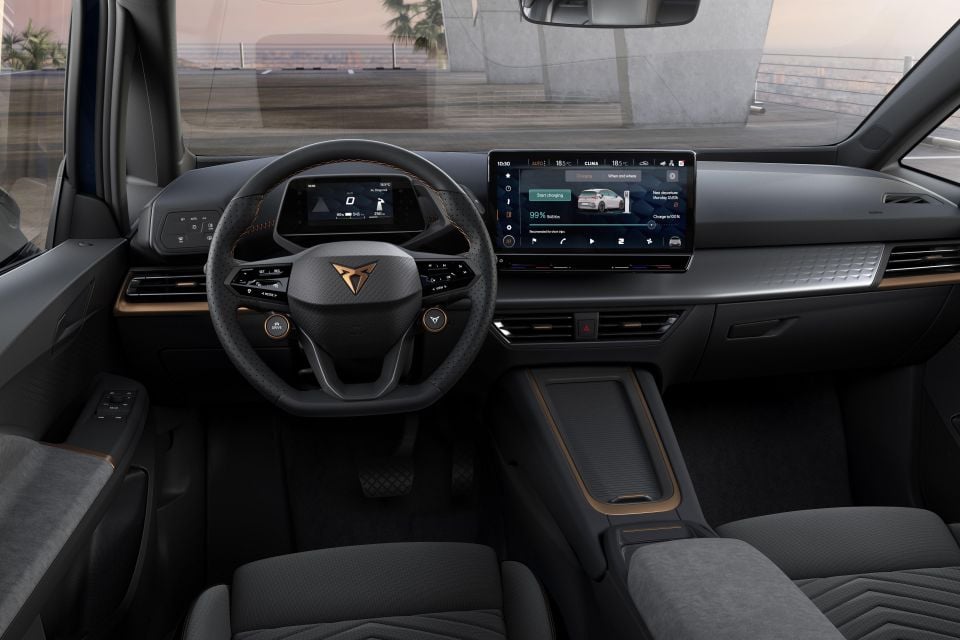
Volkswagen Australia communications boss, Paul Pottinger:Less than a Tesla.
BW: Looking at it in the context of our overall range. We’ve been fairly open in saying our range will start in the low-$40,000s and it’s ending up in the high $60,000s with lots of option boxes ticked.
Quite fundamentally, the Born fits within that group – once we finally confirm it, of course.
I think that gives you a sense of where it can fit overall. People are prepared to pay for an electric vehicle, but they want value – even if they are buying something that’s a bit different.
I think that we can offer them that value if I look at it in the context of our internal-combustion range.
BW: If you take the precedent that we’ve set with the engine line-up for the internal-combustion engines – we start with a strong performing 140kW and moving up through further performance engines – you can use that as a template for Born as well.
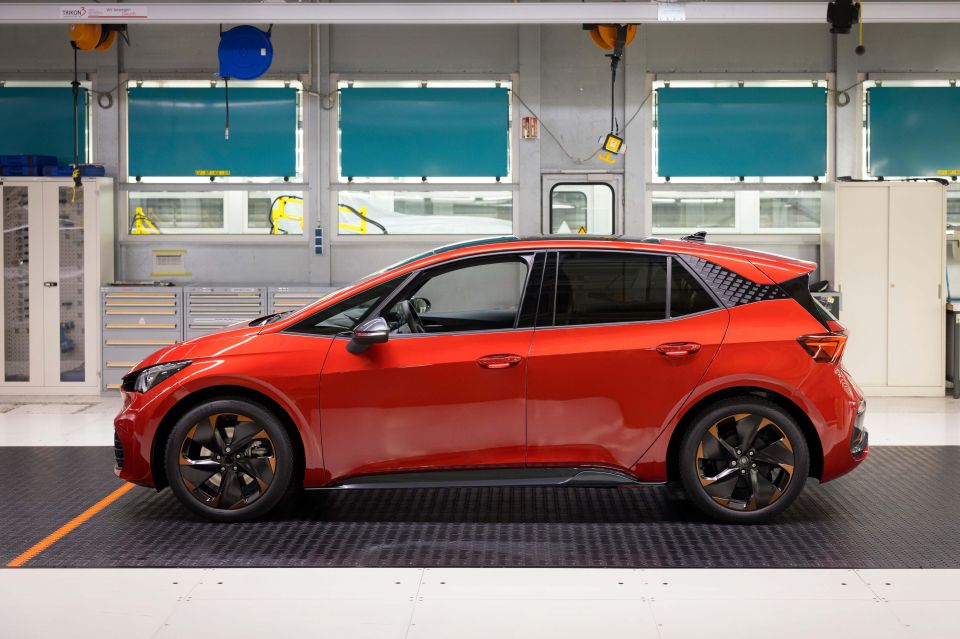
BW: This is one of the advantages here, and I didn’t really touch on it before when you asked me about why I’m confident the Cupra brand can succeed.
One of the strengths that we have, of course, is the backing of the Volkswagen Group. As of the merger with Audi Australia we’ve become one of the biggest and most influential of the automotive importers in Australia, and that gives us a huge advantage.
It gives us a huge advantage in terms of the dealer network, and being able to have the horsepower, the technical prowess to be able to offer solutions like this.
Other Group brands have already moved significantly in this space, so we’re able to take all those learnings and have that ready within our network.
That’s something that gives us really a big advantage. And it’s not just about the Volkswagen brand there, it’s about Porsche, it’s about Audi and the other brands in the Group that have already made moves here.
That gives us a really good head start.
BW: We’re definitely going to be partnering with the financial services group, and we’ll have a distinct offer for Cupra.
In fact I see that as a really strong possibility for us. To have, in a more digital environment, some really easy-to-access finance options.
I can see a space for guaranteed future value, to reassure customers that we’re here to stay and that there’s a good path for them when they come to select what I would like to think is their next Cupra.
I’ve seen the next generation of models that are coming, and I think there’s a very good chance to have someone come from their first Ateca or Formentor into some really exciting stuff in the next generation… Which I wish I hadn’t spoken about, because I can’t say anything more about them!
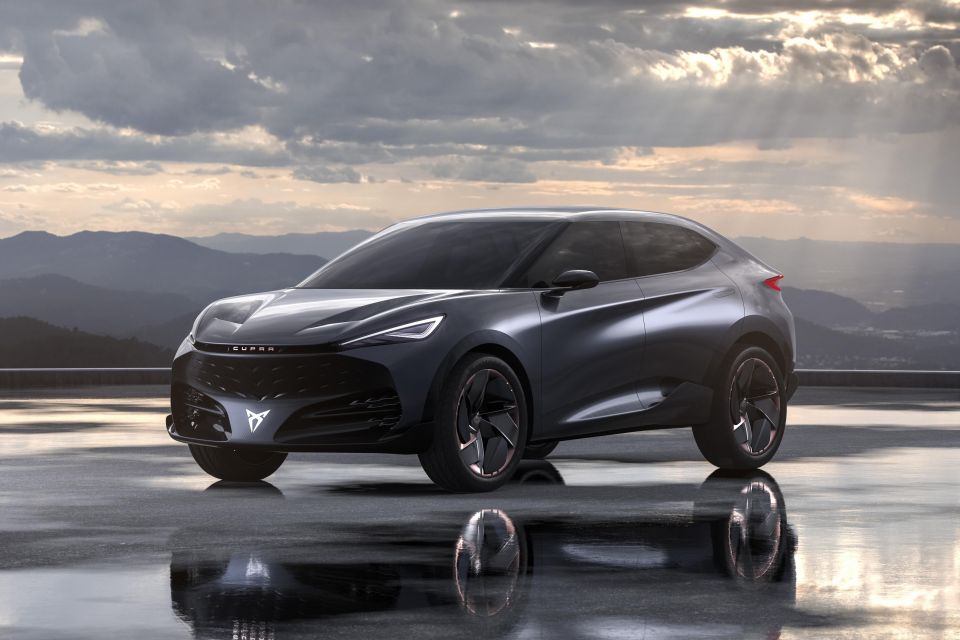
BW: What I would say is; have a look at a product like the Tavascan (concept above). This is clearly something we have our eyes on for Australia, a fully-electric platform SUV which looks absolutely unbelievable.
That is a product that fits perfectly, and is something that I’d like to see us have available.
I can quite easily imagine a customer coming in today and taking our Ateca for a drive, and maybe signing up to that car for the next three or four years, and then their next car will be a pure-electric.
That’s where we can come in with a really high-performing pure-electric that you’d enjoy going to after having your beautiful Ateca that does 0-100km/h in five seconds, and has all the boot space you could possibly want.
There’s a really exciting pathway, and it is about those electric cars… some other stuff as well, but that’s a great example of where the brand is headed and what we’d like to have on the list for customers here.
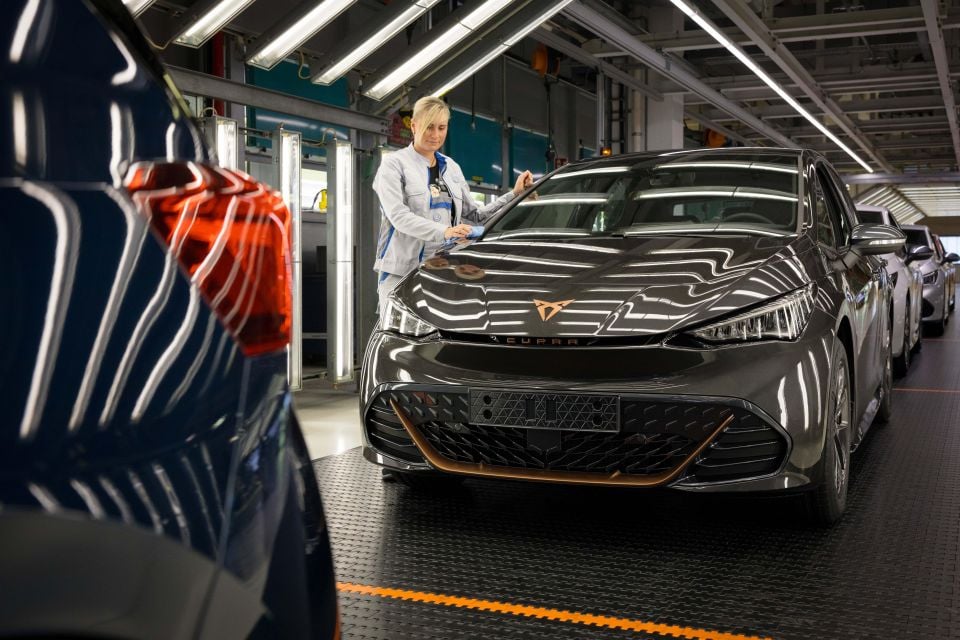
BW: I think that’s a fair point.
There’s a vision and a huge amount of energy for what Cupra can look like. In some ways, this is a brand that if you said five years ago ‘would this happen?’ most people would say ‘there’s no chance’.
That’s the energy of the place overall. To walk through the place is to feel like you are walking through a startup, that’s the energy. There’s a huge amount of people working, there’s an absolutely frenetic pace, and a passion that you feel from each of those people.
I met so many people in my time there, but whether it’s a financial controller or an engineer, or someone working on the network development side, they all share this same absolute love and desire to see this brand really prosper.
It’s that passion that drives the push to create even more interesting and even more exciting cars. That energy is absolutely part of the team.
The desire for Australia… there’s clearly an opportunity in Australia. There’s clearly a segment of this market that really looks for a car very much like this.
It’s not unreasonable to say the lifestyle in Australia – the sun, the water, the way we live – is not disconnected from exactly what you experience in Barcelona. It’s very easy, despite our different languages and lots of things that are different, it’s quite easy to see straight away why there’s a connection drawn to Australia.
BW: Just enough is how many we’d like to sell!
From a brand perception point of view, what I would like (and what I think our whole team would like) is what we’re speaking about today, this sense of the brand as design-oriented but not pretentious, as an indulgence that doesn’t have all the stuffiness of super-premium luxury brands.
I’d like to think all of the performance-oriented customers in Australia would share that same knowledge. I’d like everyone to understand that’s where the Cupra brand is positioned.
The reality of our product story is what will help tell that. There’s an authenticity about the product.
In the end, you can’t make this stuff up. We could make clever ads, we could talk positioning, we can do all that stuff all day – but the brand is rooted in a product truth.
For me, this is what’s so exciting; the authenticity of the product truth.
When you drive a Formentor, when you look across its bonnet, when you look at the bulging guards. When you look at that stuff about the car, it’s not just talk.
I could talk to you about it all day, but I could give you 15 minutes in the car and you’d be with me. That’s what I think will be so compelling, will be us having that opportunity and getting those customers in, and having those first advocates for our brand.
For me that’s the most exciting thing, because the story from there as we evolve into further electrification, and as the market is able to perceive us in an even more wide fashion, they’ll be informed by these first [buyers] and their experiences with the brand.
BW: One of the things that’s so powerful is that the Cupra brand is different, and we actually take genuine steps to not just say ‘we’re really different’, and then turn up in our suits and ties and tell you how different we are.
It’s a lived and breathed reality of how this is happening.
If I’m a designer or an engineer working on the next product range, you can’t imbue your product with a sense of authenticity if that authenticity doesn’t exist. That’s actually what’s quite cool.
BW: The interaction with this initial tribe, this initial community, is so important.
I see a lot of opportunities for us to be able to interact with those people.
If I think of our management team, our first local management team, it’s critical that we’re all quite involved in the customer interactions, and it’s critical that we position ourselves physically inside the stores at first so that we genuinely have an understanding of what customers are talking to us about.
That’s so, so powerful, and is so important in having advocates at this first stage who are going to help up collectively go on the longer journey with Cupra.
BW: We’re covering gaps everywhere!
The fact Leon is front-wheel drive, but with a 221kW engine, is a wonderful opportunity because there’s a section of the market that isn’t necessarily covered.
You didn’t ask this, but it’s quite predictable the question will eventually be ‘how is this going to take from Volkswagen Group?’.
The answer is it’s not really about taking from the Volkswagen Group at all. It’s about addressing areas of the market that actually the Volkswagen Group isn’t touching at the moment, and that’s a prime example.
Take advantage of Australia's BIGGEST new car website to find a great deal on a Cupra.
Scott Collie is an automotive journalist based in Melbourne, Australia. Scott studied journalism at RMIT University and, after a lifelong obsession with everything automotive, started covering the car industry shortly afterwards. He has a passion for travel, and is an avid Melbourne Demons supporter.


Max Davies
5 Days Ago
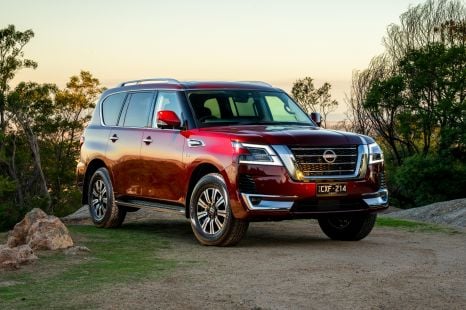

James Wong
4 Days Ago
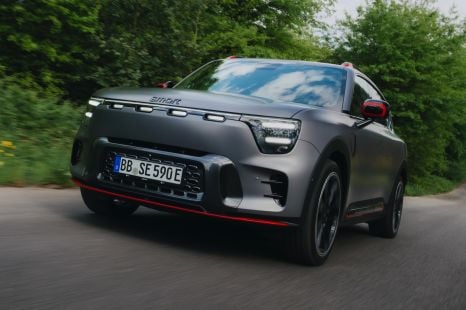
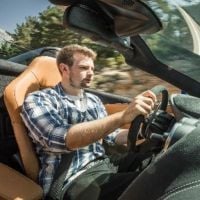
James Fossdyke
3 Days Ago

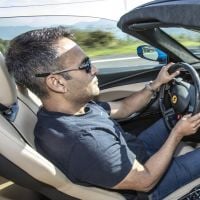
Gautam Sharma
2 Days Ago
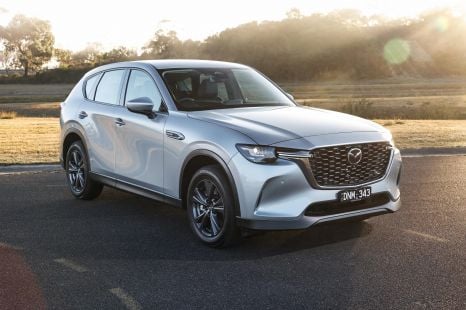

Josh Nevett
18 Hours Ago


William Stopford
18 Hours Ago